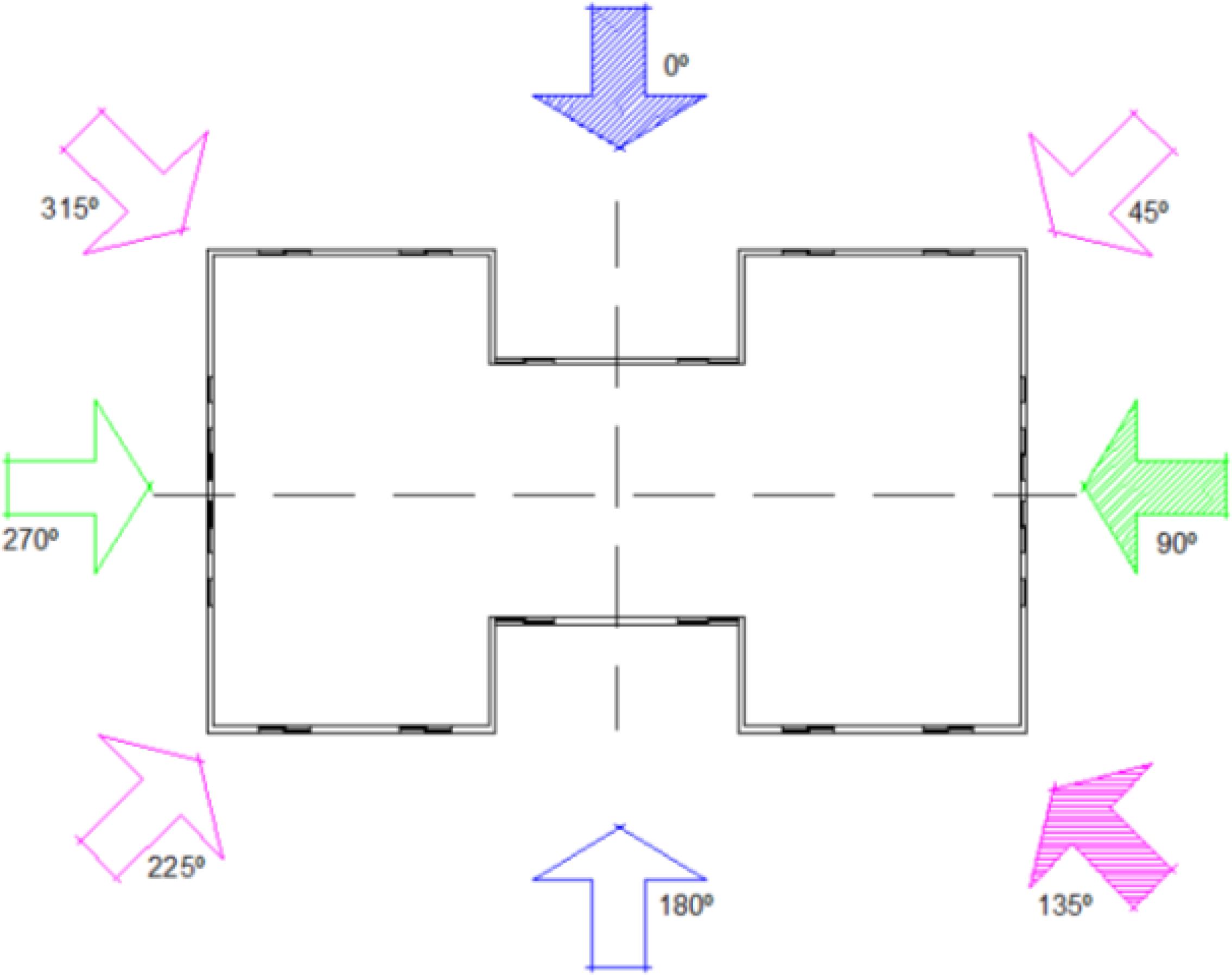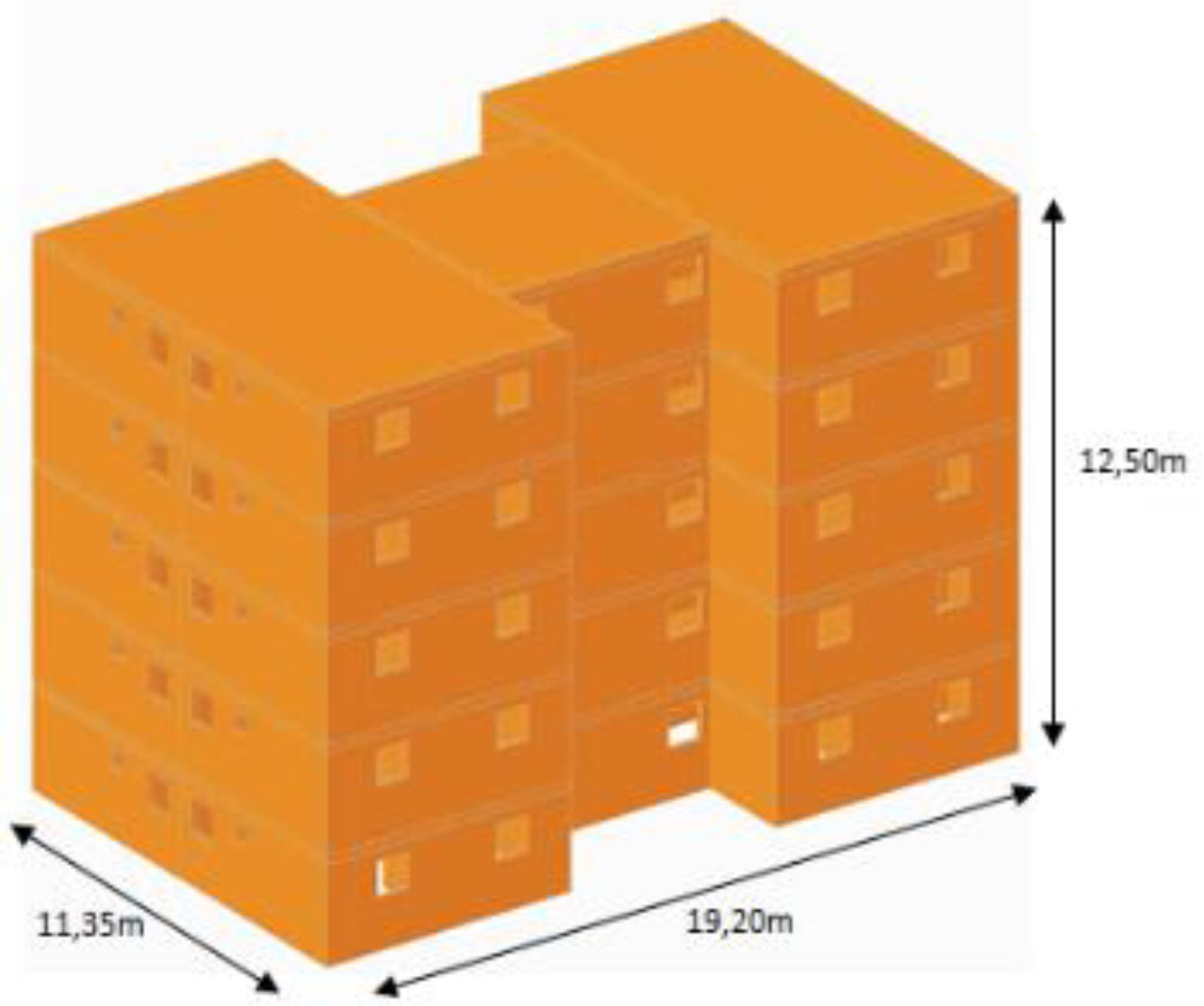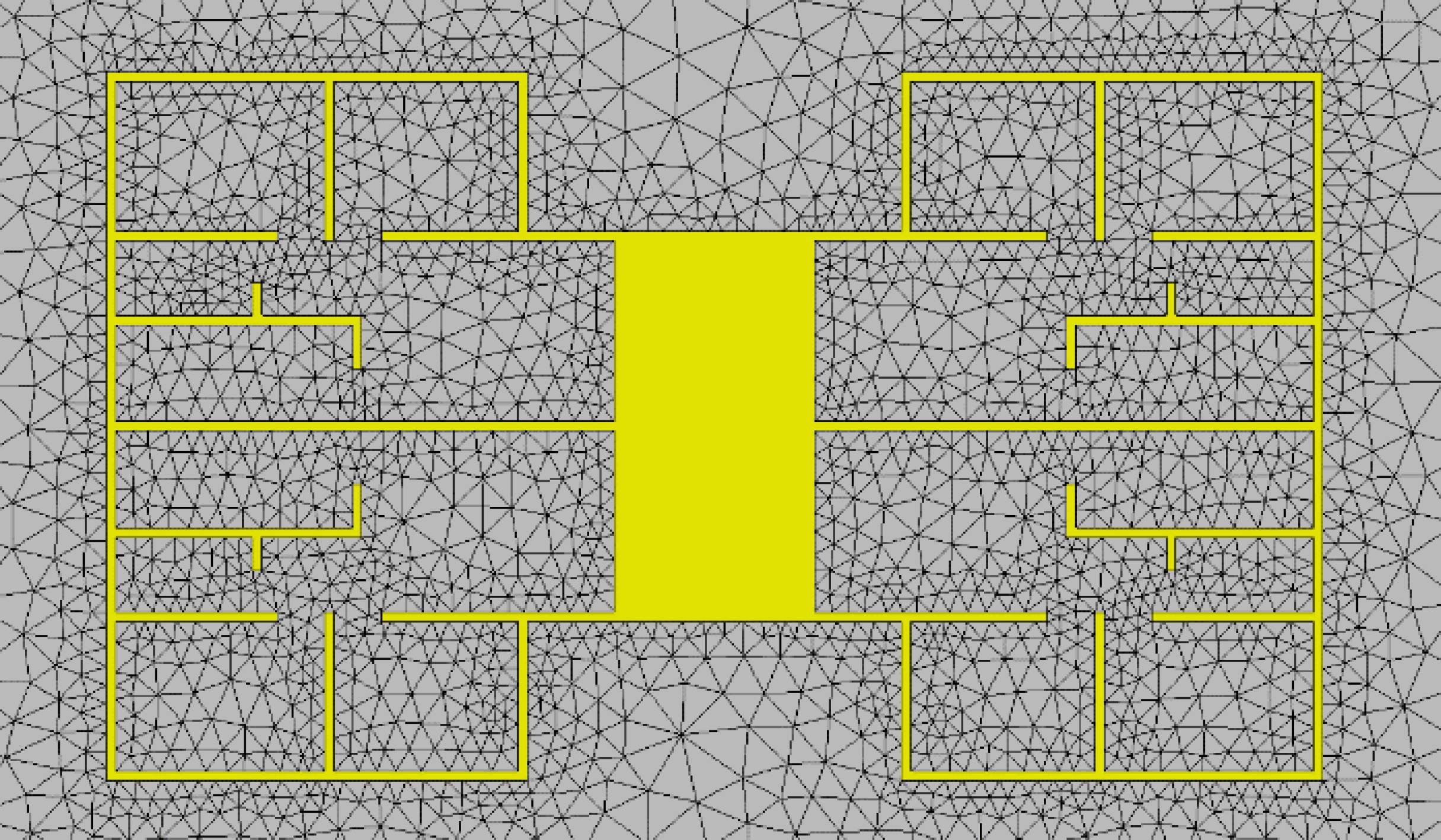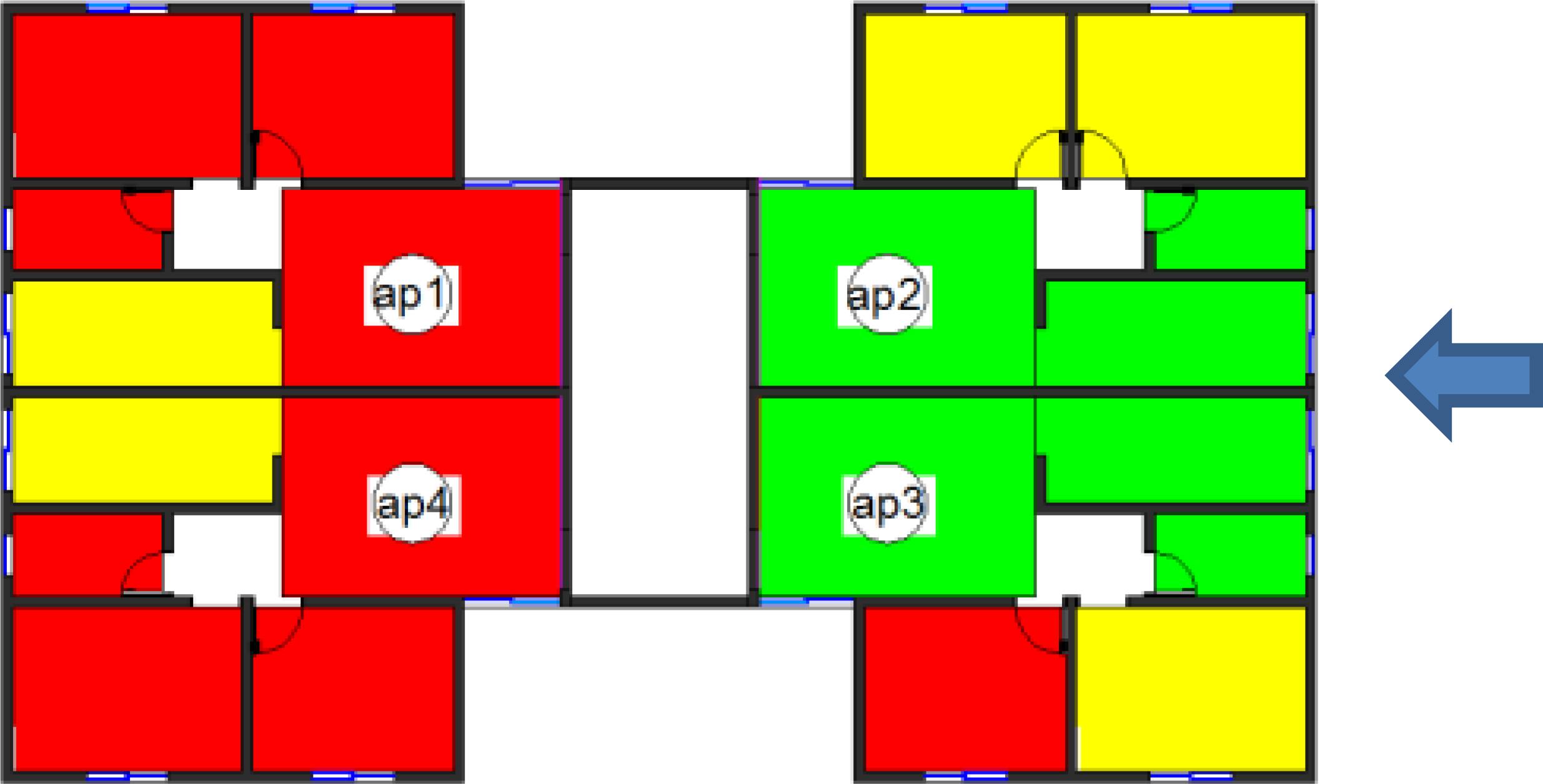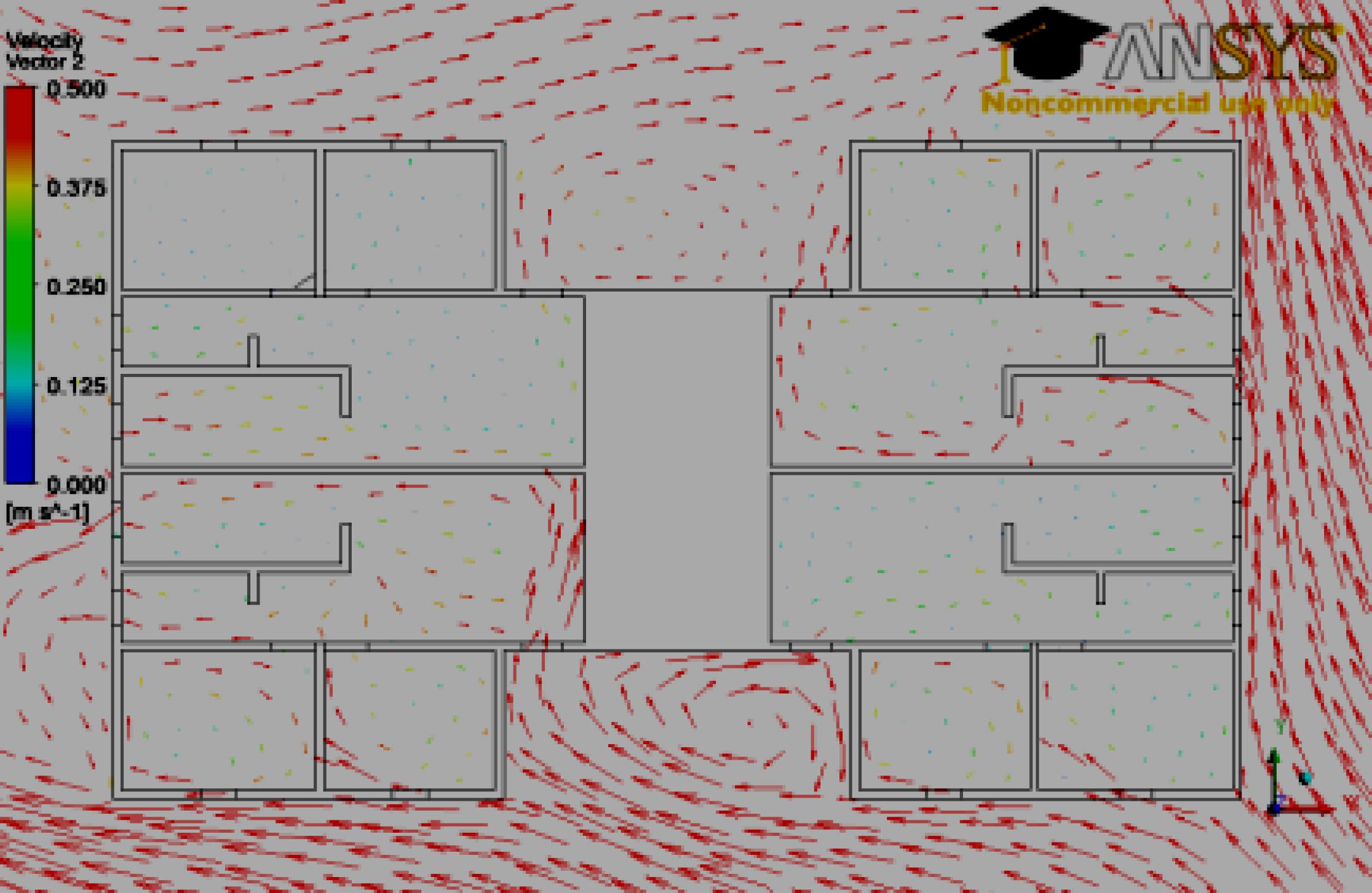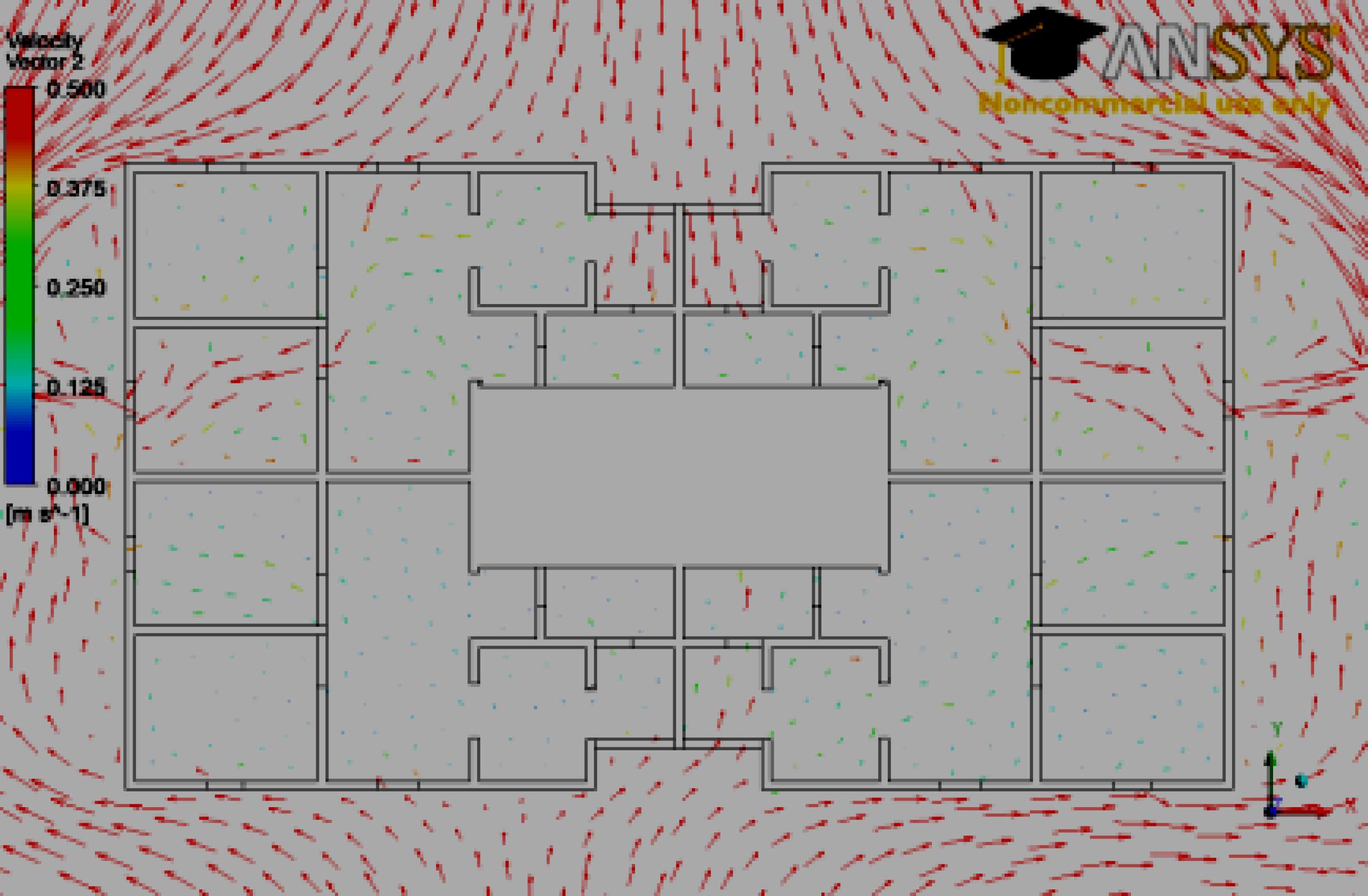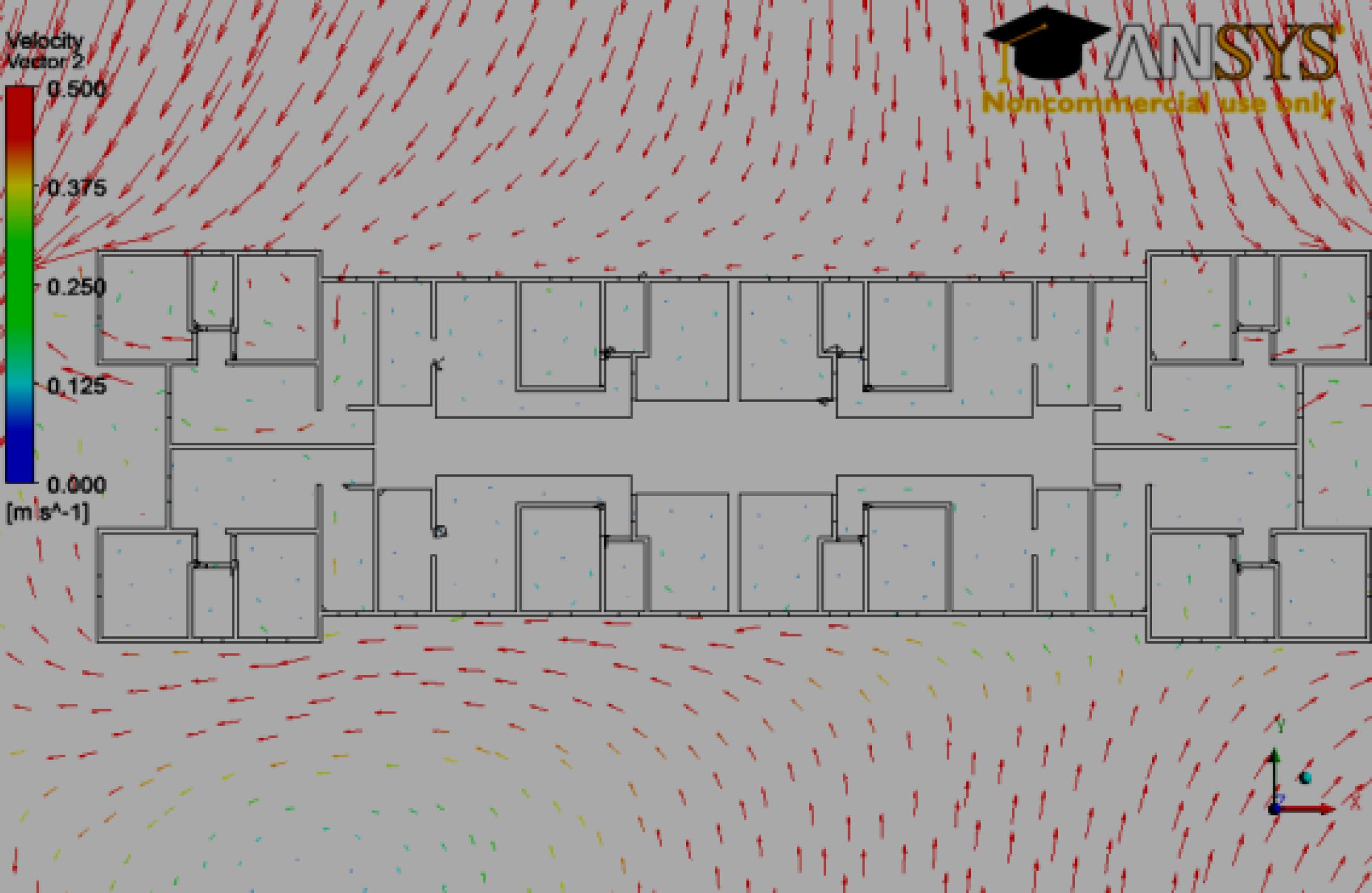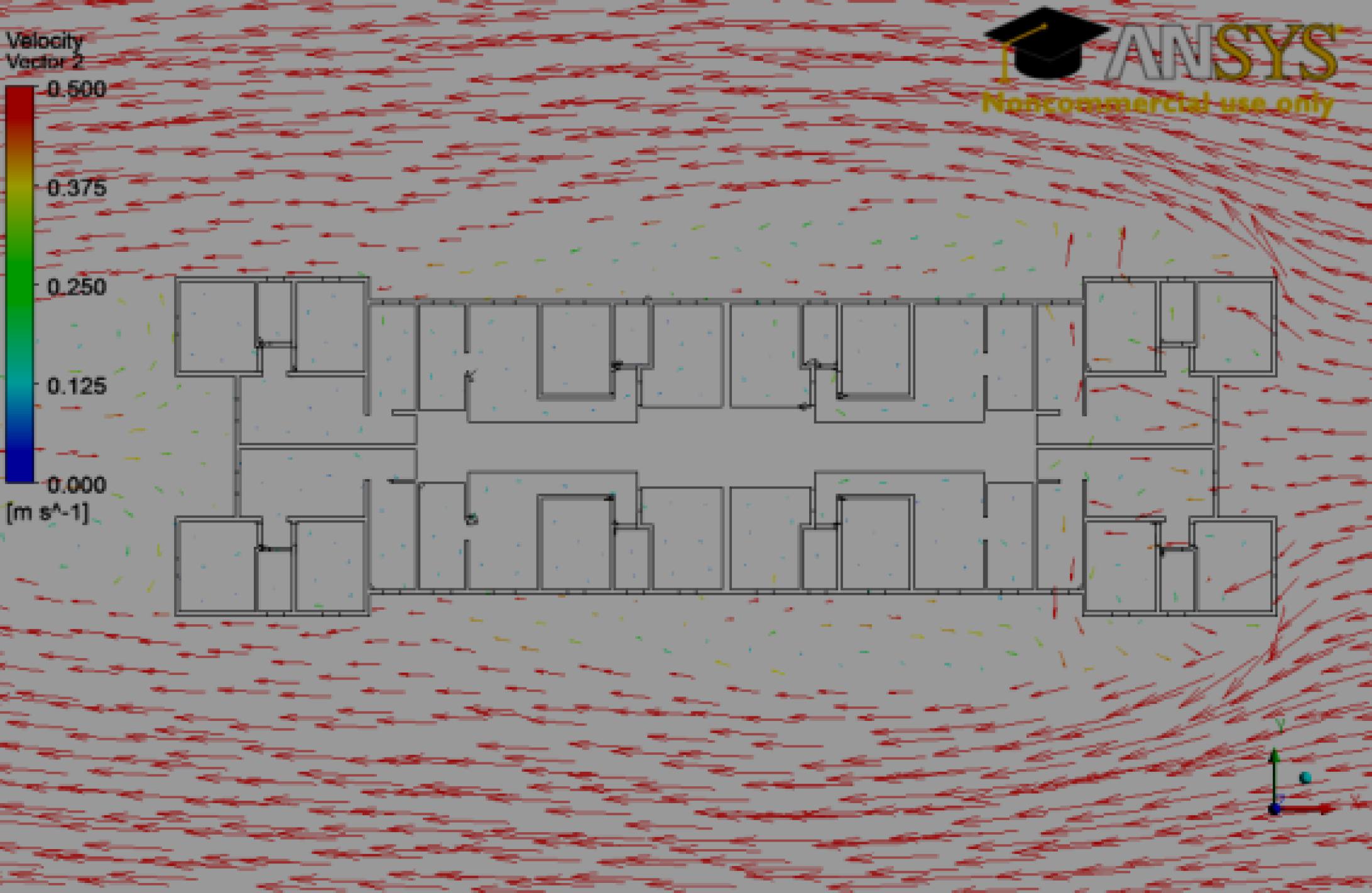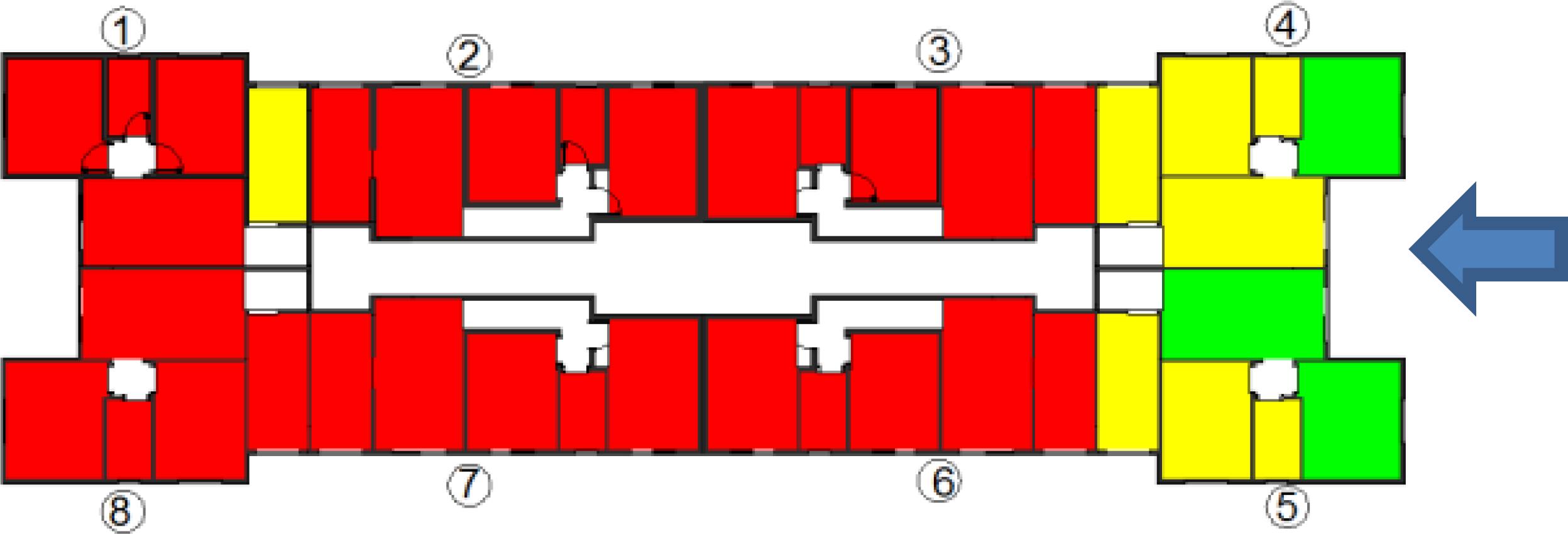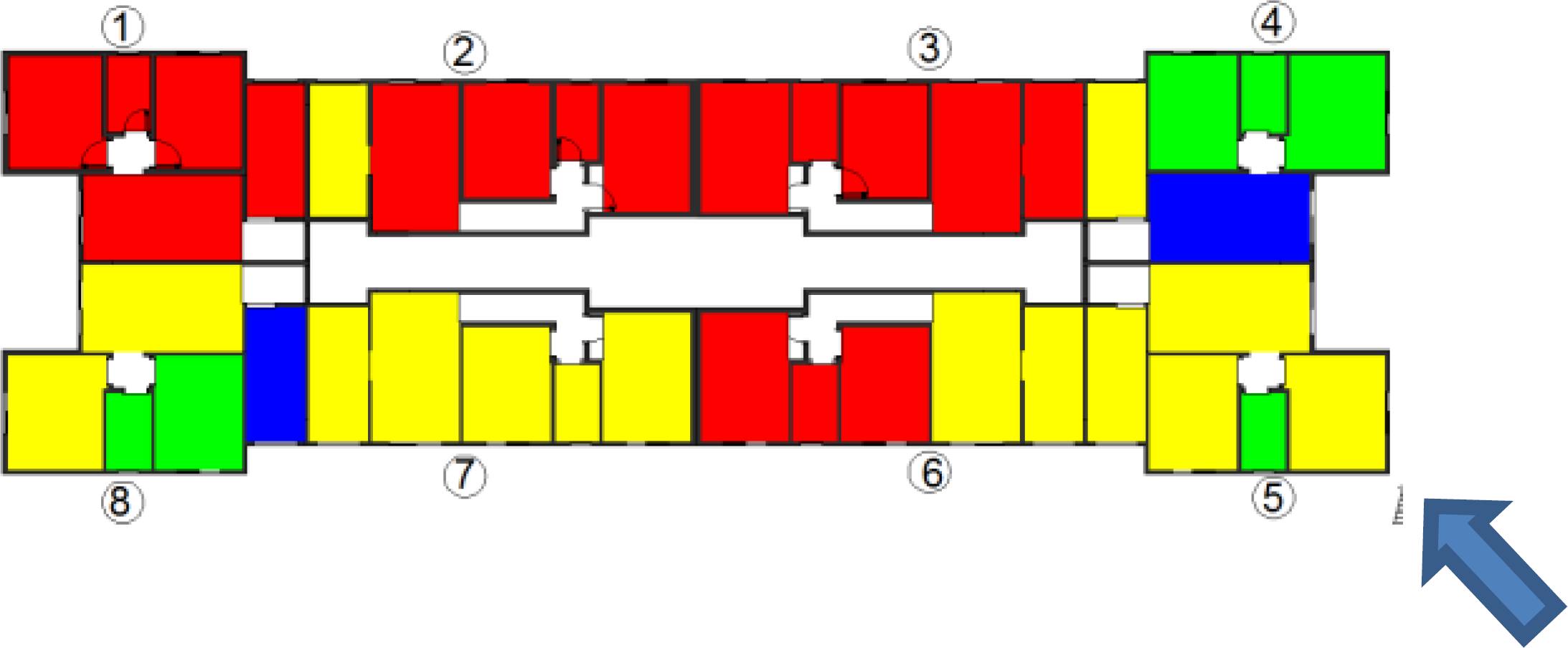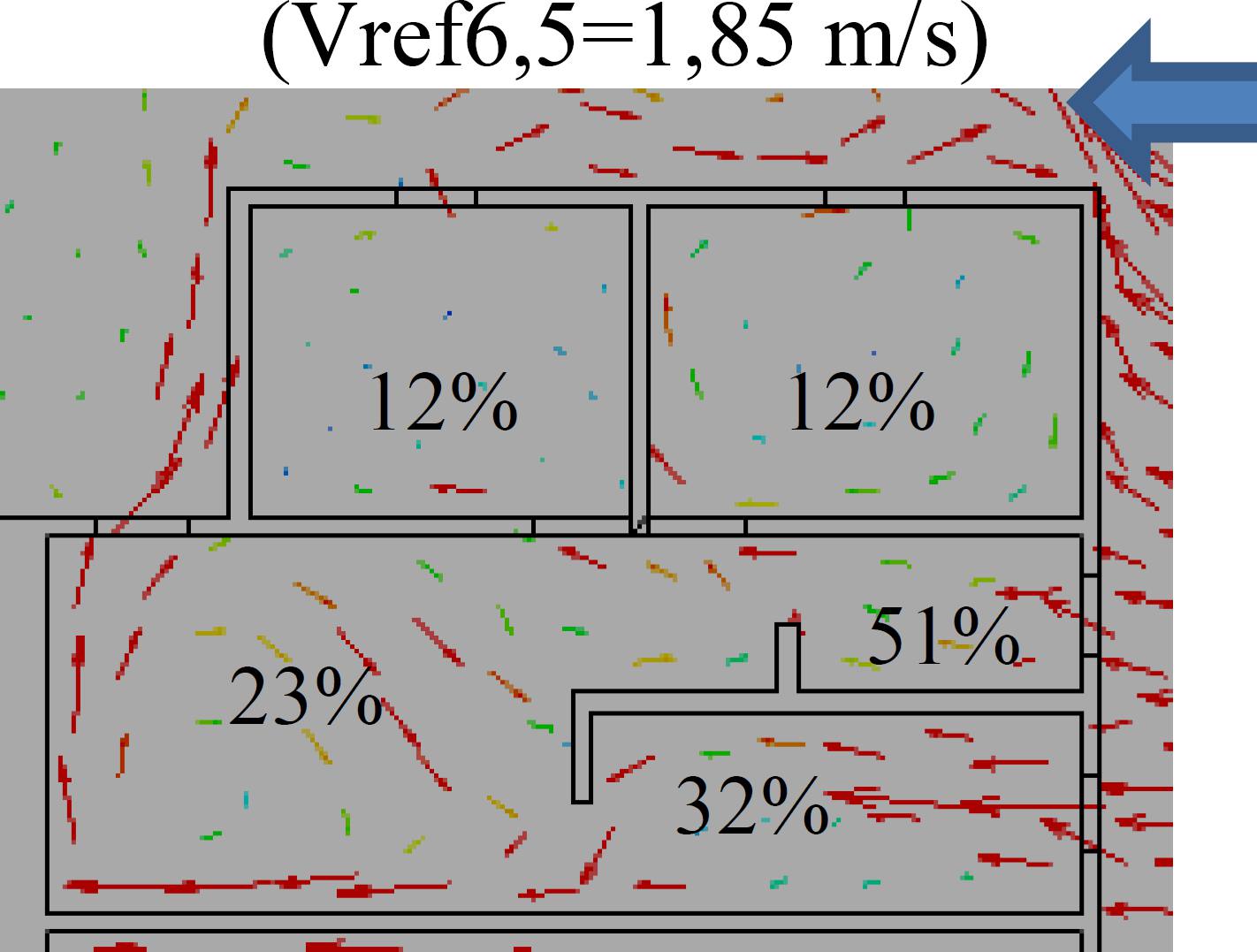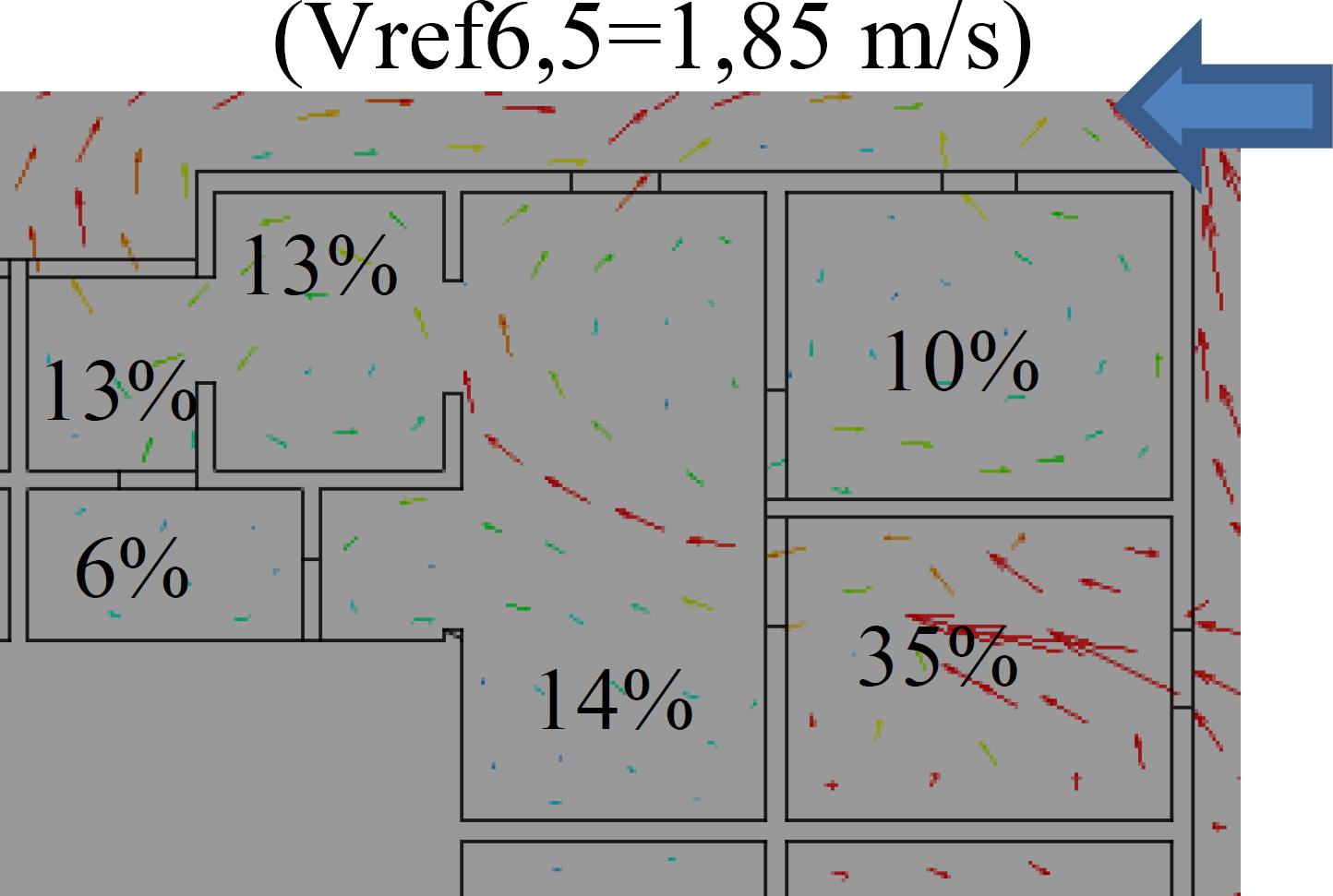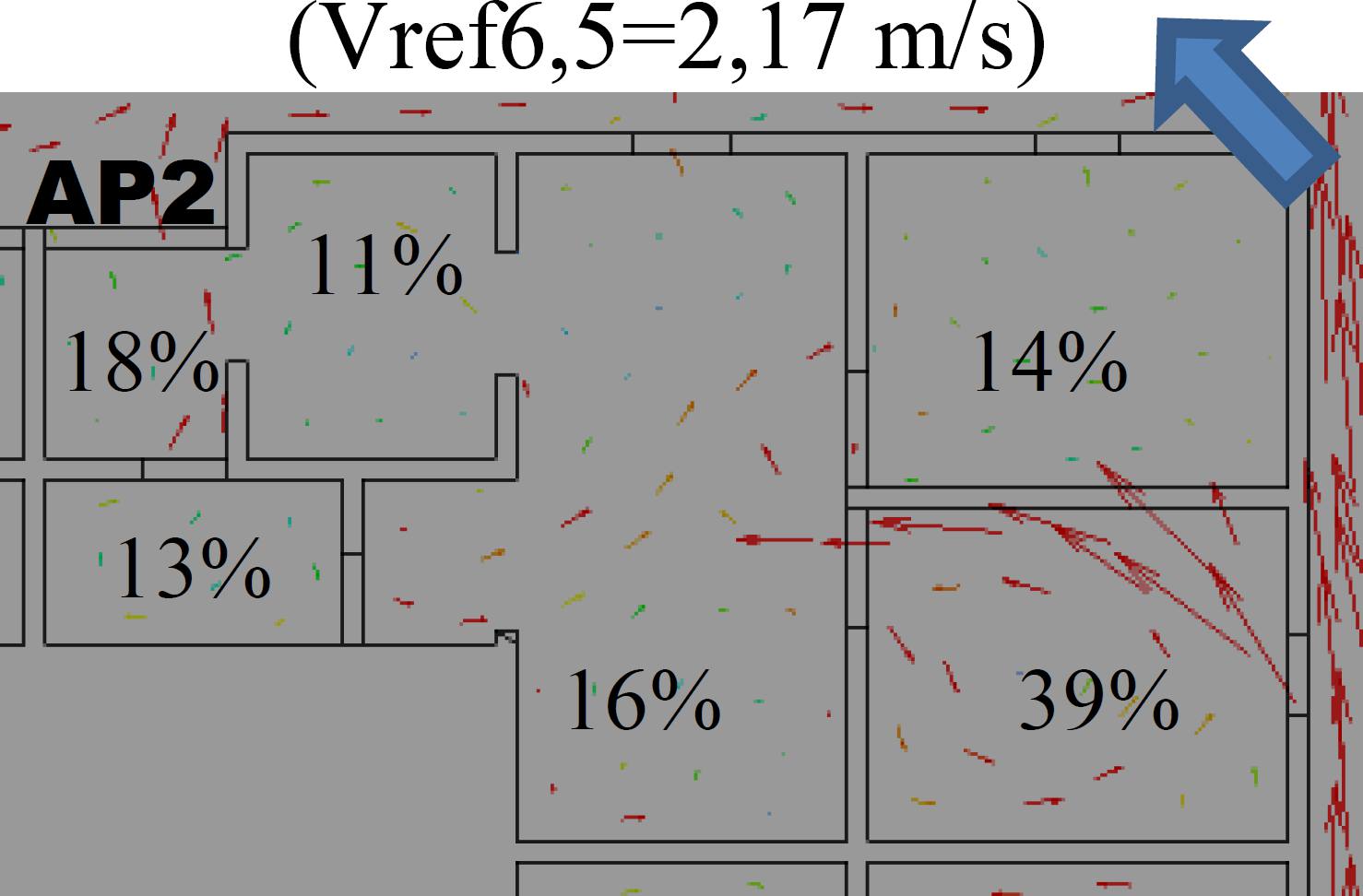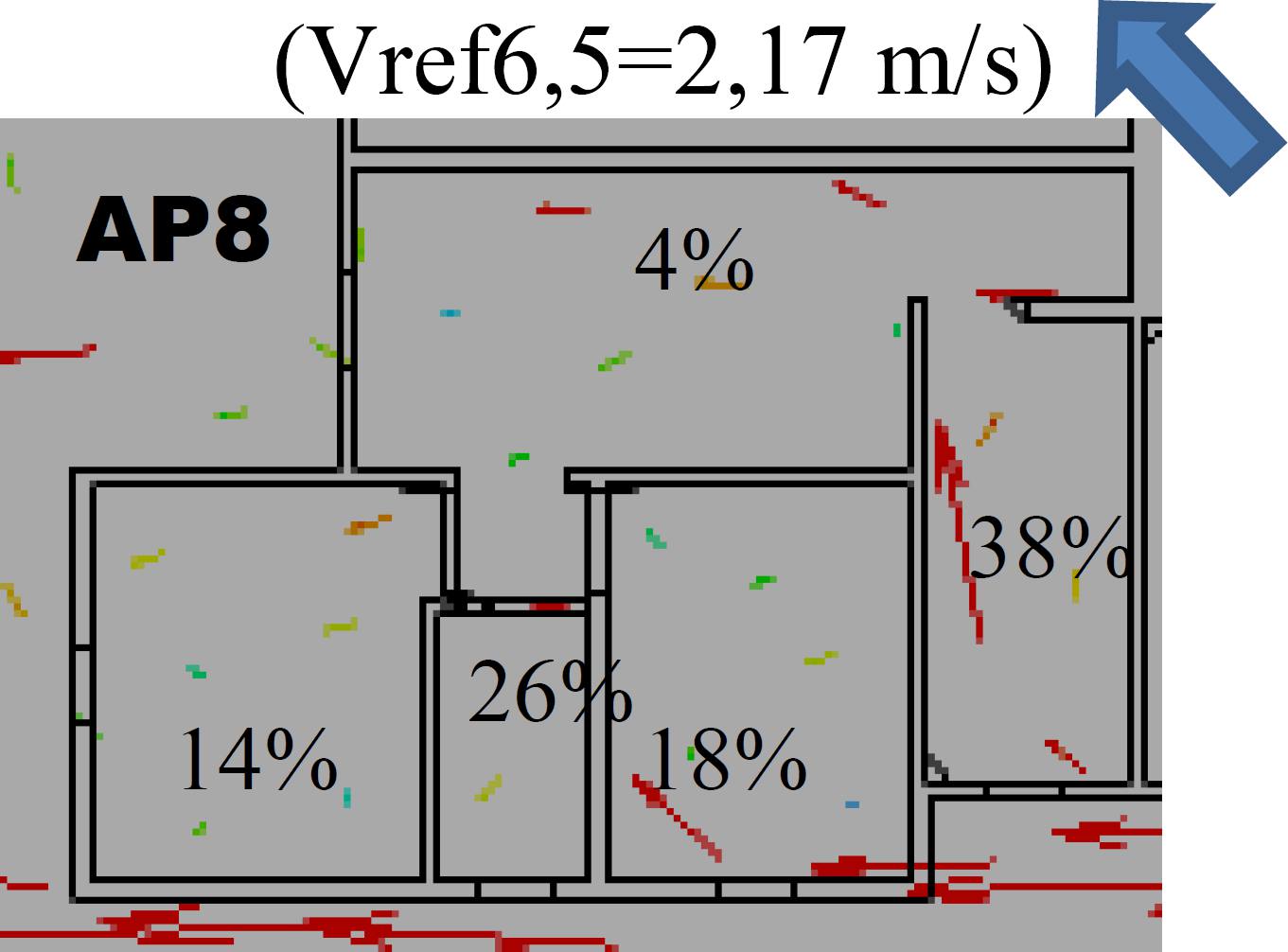Abstract
Natural ventilation is a passive architectural design strategy that should be used whenever possible in hot climate countries like Brazil. One of the several methods used to predict the behaviour of natural ventilation is computational fluid dynamics or CFD. The purpose of this paper is to analyse natural ventilation by wind action inside buildings by using the CFD simulation method. Three multifamily buildings from the Brazilian housing program Minha Casa, Minha Vida were taken as case studies. The performance of ventilation for three wind incidence angles (0º, 90º and 135º) is analysed. The study presents both quantitative results (average wind speed in each internal environment) and qualitative results (images of the external and internal air flow). The results indicate best ventilation performance in type 1, "H" type design, wherein the large opening in the indentation played a decisive role. In the type 2 design, a near square typology, the design solution to ventilate the bathroom and kitchen through the opening of the service area proved to be inefficient. The worst performance was seen in type 3, a building with large monolithic facades (no indentations).
Keywords:
Natural ventilation; CFD Simulation; Wind driven ventilation





